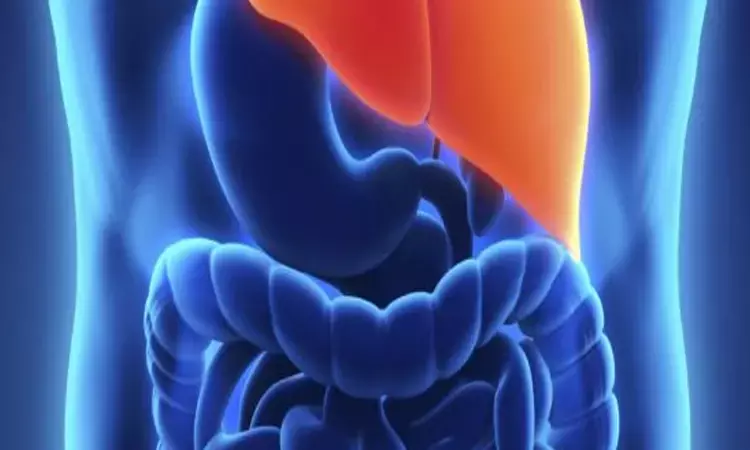- Home
- Medical news & Guidelines
- Anesthesiology
- Cardiology and CTVS
- Critical Care
- Dentistry
- Dermatology
- Diabetes and Endocrinology
- ENT
- Gastroenterology
- Medicine
- Nephrology
- Neurology
- Obstretics-Gynaecology
- Oncology
- Ophthalmology
- Orthopaedics
- Pediatrics-Neonatology
- Psychiatry
- Pulmonology
- Radiology
- Surgery
- Urology
- Laboratory Medicine
- Diet
- Nursing
- Paramedical
- Physiotherapy
- Health news
- Fact Check
- Bone Health Fact Check
- Brain Health Fact Check
- Cancer Related Fact Check
- Child Care Fact Check
- Dental and oral health fact check
- Diabetes and metabolic health fact check
- Diet and Nutrition Fact Check
- Eye and ENT Care Fact Check
- Fitness fact check
- Gut health fact check
- Heart health fact check
- Kidney health fact check
- Medical education fact check
- Men's health fact check
- Respiratory fact check
- Skin and hair care fact check
- Vaccine and Immunization fact check
- Women's health fact check
- AYUSH
- State News
- Andaman and Nicobar Islands
- Andhra Pradesh
- Arunachal Pradesh
- Assam
- Bihar
- Chandigarh
- Chattisgarh
- Dadra and Nagar Haveli
- Daman and Diu
- Delhi
- Goa
- Gujarat
- Haryana
- Himachal Pradesh
- Jammu & Kashmir
- Jharkhand
- Karnataka
- Kerala
- Ladakh
- Lakshadweep
- Madhya Pradesh
- Maharashtra
- Manipur
- Meghalaya
- Mizoram
- Nagaland
- Odisha
- Puducherry
- Punjab
- Rajasthan
- Sikkim
- Tamil Nadu
- Telangana
- Tripura
- Uttar Pradesh
- Uttrakhand
- West Bengal
- Medical Education
- Industry
Lanifibranor reduces lipid, inflammatory, and fibrosis biomarkers in NASH: NEJM

Nonalcoholic steatohepatitis (NASH) management is a situation which still needs to be answered. Lanifibranor is a pan-PPAR (peroxisome proliferator–activated receptor) agonist that affects important inflammatory, metabolic, and fibrogenic processes in NASH development. The percentage of patients who experienced a drop of at least 2 points in the SAF-A score without worsening of fibrosis in this phase 2b study including patients with active NASH was substantially greater with the 1200-mg dosage of lanifibranor than with placebo.
This study was conducted by Sven M. Francque and team, the findings are published in The New England Journal of Medicine on 21st October, 2021.
Patients with noncirrhotic, highly active NASH were randomly allocated in a 1:1:1 ratio to receive 1200 mg or 800 mg of lanifibranor or placebo once daily for 24 weeks in this phase 2b, double-blind, randomized, placebo-controlled study. The primary end point was a decrease of at least 2 points in the SAF-A score (the activity component of the Steatosis, Activity, Fibrosis [SAF] scoring system, which includes ballooning and inflammation scores) without worsening of fibrosis; SAF-A scores range from 0 to 4, with higher scores indicating more severe disease activity. Secondary endpoints were NASH resolution and fibrosis regression.
A total of 247 individuals were randomly assigned, with 103 (42%) having type 2 diabetes mellitus and 188 (76%) having considerable (moderate) or advanced fibrosis. The percentage of patients who had a drop of at least 2 points in the SAF-A score without worsening of fibrosis was substantially greater in those who got the 1200-mg dosage of lanifibranor, but not in those who received the 800-mg dose, than in those who received placebo. The results indicated lanifibranor dosages of 1200-mg and 800-mg over placebo for resolution of NASH without worsening of fibrosis, improvement in fibrosis stage of at least 1 without worsening of NASH, and resolution of NASH with improvement in fibrosis stage of at least 1.
The lanifibranor groups had lower levels of liver enzymes and higher levels of the majority of lipid, inflammatory, and fibrosis indicators. The dropout rate for adverse events was less than 5% and was consistent across study groups. Lanifibranor caused increased diarrhea, nausea, peripheral edema, anemia, and weight gain than placebo.
In conclusion, the favorable results of this study justify continued evaluation of lanifibranor in phase 3 studies.
Reference:
Francque, S. M., Bedossa, P., Ratziu, V., Anstee, Q. M., Bugianesi, E., Sanyal, A. J., Loomba, R., Harrison, S. A., Balabanska, R., Mateva, L., Lanthier, N., Alkhouri, N., Moreno, C., Schattenberg, J. M., Stefanova-Petrova, D., Vonghia, L., Rouzier, R., Guillaume, M., Hodge, A., … Abdelmalek, M. F. (2021). A Randomized, Controlled Trial of the Pan-PPAR Agonist Lanifibranor in NASH. In New England Journal of Medicine (Vol. 385, Issue 17, pp. 1547–1558). Massachusetts Medical Society. https://doi.org/10.1056/nejmoa2036205
Medical Dialogues consists of a team of passionate medical/scientific writers, led by doctors and healthcare researchers. Our team efforts to bring you updated and timely news about the important happenings of the medical and healthcare sector. Our editorial team can be reached at editorial@medicaldialogues.in.
Dr Kamal Kant Kohli-MBBS, DTCD- a chest specialist with more than 30 years of practice and a flair for writing clinical articles, Dr Kamal Kant Kohli joined Medical Dialogues as a Chief Editor of Medical News. Besides writing articles, as an editor, he proofreads and verifies all the medical content published on Medical Dialogues including those coming from journals, studies,medical conferences,guidelines etc. Email: drkohli@medicaldialogues.in. Contact no. 011-43720751


